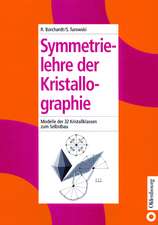Origin of the Moon. New Concept: Geochemistry and Dynamics
Autor Erik M. Galimov, Anton M. Krivtsoven Limba Engleză Hardback – 13 sep 2012
Preț: 1315.02 lei
Preț vechi: 1707.81 lei
-23% Nou
251.62€ • 263.42$ • 208.21£
Carte tipărită la comandă
Livrare economică 05-19 aprilie
Specificații
ISBN-10: 3110286289
Pagini: 179
Ilustrații: 71 farb. Abb., 17 schw.-w. Tab.
Dimensiuni: 170 x 240 x 15 mm
Greutate: 0.48 kg
Editura: De Gruyter
Colecția De Gruyter
Locul publicării:Berlin/Boston
Notă biografică
Professor Anton M. Krivtsov, St. Petersburg State Polytechnical University, Russia.
Cuprins
I The Moon
History of study. The Moon as a celestial body. Structure, chemical composition and mineralogy. Lunar geology. Data on the age of the Moon.
II Solar system
Beginning of the Solar system. Extrosolar planetary systems. Possible scenarios of accumulation of planets.
III Hypotheses of the Moon's origin
The giant impact model. Other models.
IV The model of formation of the Earth-Moon system via fragmentation of the initial gas-dust concentration
Enrichment of the Moon in refractory elements and depletion in volatiles. Volatility of iron. Evaporation of particles during contraction of the initial cloud is a crucial factor for both: dynamic of its fragmentation and depletion of the Moon in iron. Geochemical consequences following from the model and how they are reconciled with the observations.
V Isotope constraints for evolution of the gas-dust cloud initial for Earth and Moon and again of their formation Stable isotopes
VI Dynamics of the Earth-Moon formation Existing models for simulation of the dynamics of the Earth-Moon formation. Modelling of the Earth-Moon system formation using particles. Sequential stages of Earth-Moon system formation. Formation of the gas-dust cloud. Rotational collapse. Accumulation growth of the Earth and Moon embryos. Results of the dynamics simulation and analysis of their dependence on the model parameters and conditions of the computations. Analysis of the composition of Earth and Moon obtained from the dynamical model.
Summary
References










